Bull riding is the crown jewel of rodeo. There are other more cultivated, genteel rodeo events where skill and practice determine the outcome, but for sure-fire knock your jeans in the dirt excitement it is bull riding. What you have is a 1800 to 2000 lb. animal with skin two sizes to big for the body it covers. If you were brave you could grab the skin on the back of the bulls hide and shove it 6-8″ in either direction, and a cowboy who is determined to ride him holding on to a single rope tied around the bulls body and hang on for eight seconds. He has to stay on while the bull uses every trick it knows to unseat him while not touching the animal with his free hand and not speaking harshly or using rodeo slurs of any kind to the bull during the ride.
It all starts behind this innocent looking chute. Behind the soothing lavender colored gate is a bull. It is not happy. On his back is a cowboy tying himself to that bull by wrapping a single rope that encircles the bulls body around his hand and willing his butt to stick to the bulls back like superglue. He has to stay on this whirling dervish for eight seconds to get paid. This seldom happens as the bull has other plans.
The chute is slammed open and the enraged bull emerges with the hopeful rider on its back.
In seconds, in this case maybe 2 to 3 of them, the rider is flung from its back.
The bull not content with unseating the rider wants his pound of flesh and attempts to do great bodily harm to the rider. He prefers to pin the rider to the ground with his horns or perhaps jump all over him with his hooves neither of which is good news for the rider. Not only does the rider go home broke but maybe to the emergency room for a cast and some traction.
That’s where the angels of the arena, the rodeo clown, earns his money. His job is to distract the bull from its murderous intentions and save the cowboy from any more distress. Here he is giving the bull the well-known rodeo command to sit. This gives the cowboy time to scramble out-of-the-way and climb the fence to safety.
Another cowboy tries his luck. The bull tries his. This is known as air time where the bull levitates before returning to earth. The longer his air time the harder he lands. Almost always this results in the cowboy not finishing his eight seconds.
As you can see due to the abnormal amount of air time this bull managed to hold it resulted in the immediate dislodging of his rider. No pay for him today either.
If the ride was a very short one it will occasionally cause the bull to feel unsatisfied, as if it didn’t get its money’s worth. He will then not return to the holding pen until he runs around the arena for a while. That’s where the mounted cowboys working the arena come into play. Their job is to make sure the bulls return to the holding pen in a timely manner usually by roping it and encouraging it with gentle phrases of admiration to get out of the arena so the next bull and rider can have their eight seconds of glory.
This is called the “Shot from Guns” style of bucking. The bull run out for a few feet then points it horns at the sky and leaps, no, bounds into the sky.
While airborne it twists and turns its body in an amazing form of acrobatics while flinging its robust butt in the air.
This almost always results in the cowboy leaving the bulls back to keep his appointment with the ground. As this happens in less than eight seconds the cowboy does not get paid.
Knowing he’s going home broke causes the cowboy some unhappiness and he will often take a few moments to pray, sad at going home unpaid but thankful to be alive.
He only takes a very few moments though for his communing with his maker as he realizes the bull has not forgotten he is still in the arena and fair game.
The bull intent on retribution for any indignities it feels it has endured tries very hard to make some one pay.
Running around the arena after dislodging it rider the bull kicks up its heels in celebration. This triggers the arena men to go to work and roping soon ensues.
Many ropes in fact as it is not simple to rope a two thousand pound bull and just lead it off like a dog on a leash. More and more ropes are used until the sheer weight of them causes the bull to decide to return to the holding pen.
In some cases when the bull is particularly stubborn and unruly the cowboys will go into what is called the helicopter effect where they constantly whirl their ropes causing a helicopter sound which can freeze the bull into submission where it can be properly roped.
This whirling of ropes and unusual noises confuses the bull stunning it momentarily into immobility.
So it can be led away after being helicoptered.
Having successfully removing the bull the arena man returns to his station for the next event.
Sometimes the bull and rider will interact in unusual ways. Here having come to an understanding where neither of them was injured or humiliated they do a little disco dancing where each gets to show off their moves. The crowd of fence sitting observers likes this and gives both very high marks.
Look closely at this bulls eye. He knows that he has got this riders number.
Sure enough moments later the rider begins his short but soon to be painful departure from his back.
Unfortunately some bulls just get unruly and have to be manhandled. The rodeo clown is about to perform a dangerous but necessary maneuver where he will grab the bull by its horns and using a type of ancient bull jujitsu will flip this bull over on its back where the other cowboys will each grab a leg then push it out of the arena. This maneuver is not often seen but is known to be very effective if embarrassing for the bull.
These unsung heroes of the arena, the working cowboys, or peace keepers of the incredible spectacle known as bull riding, watch carefully for the next pair of competitors to enter the stage. This is bull riding in all its excitement, drama and adventure. See it when you can.

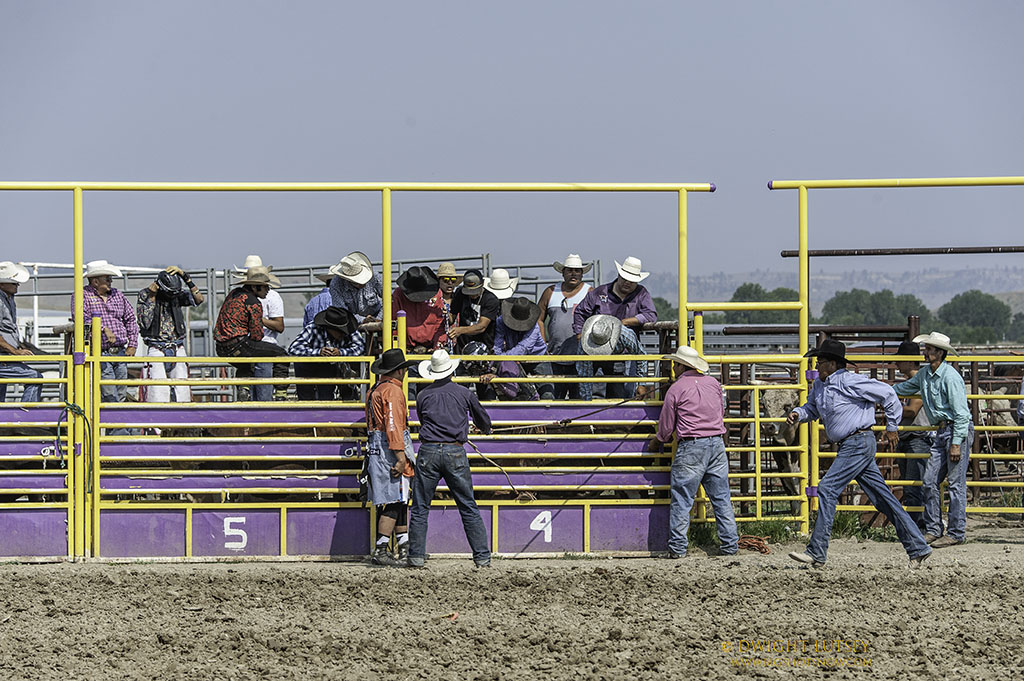
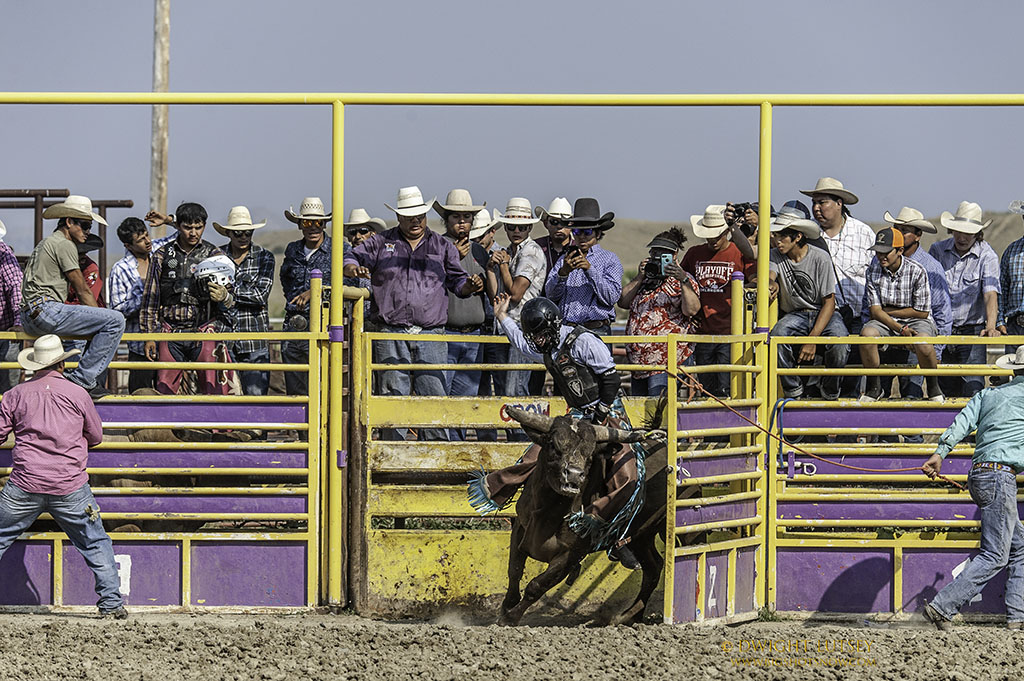
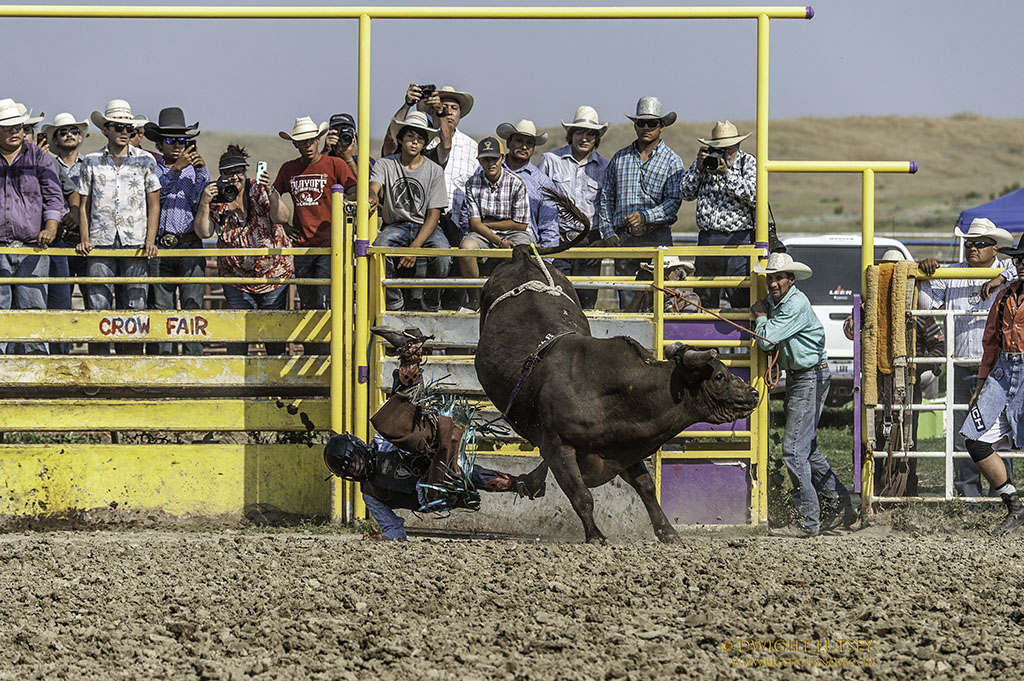
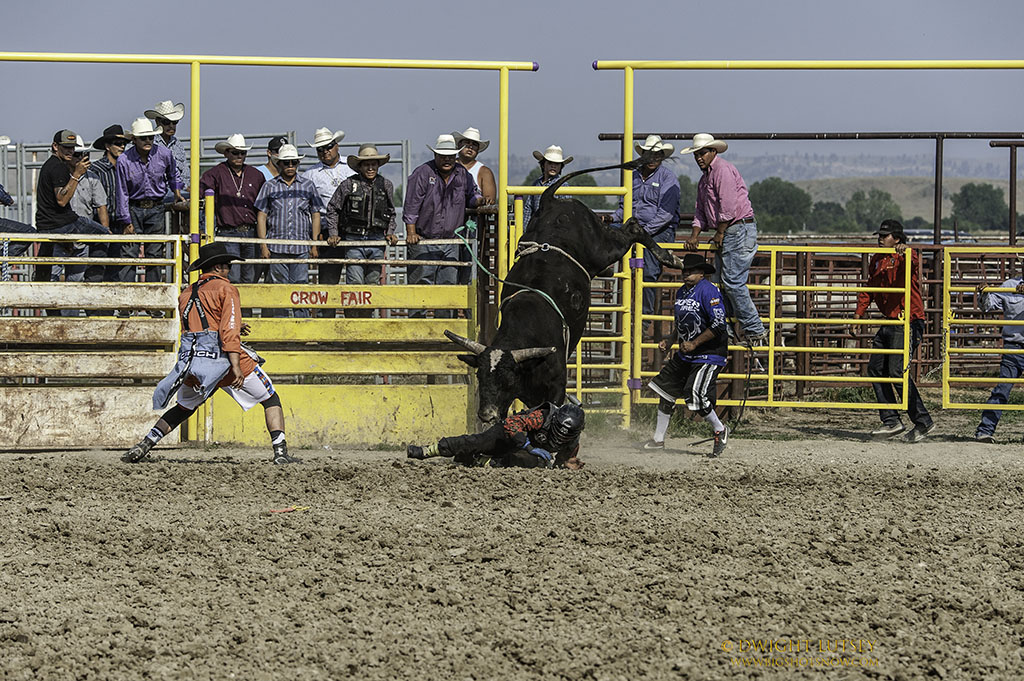
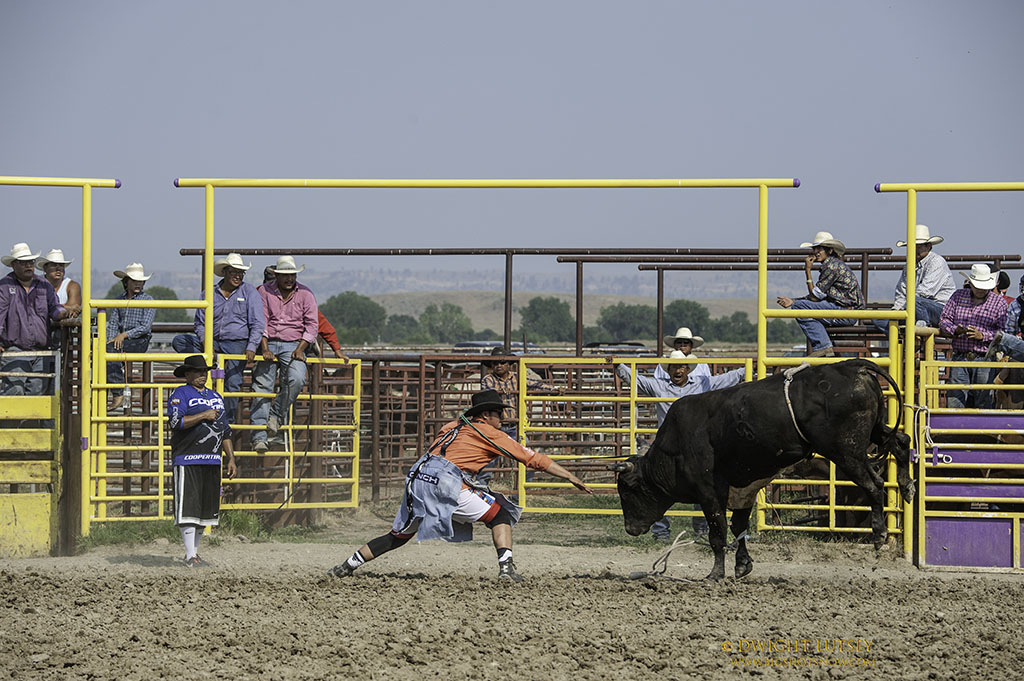

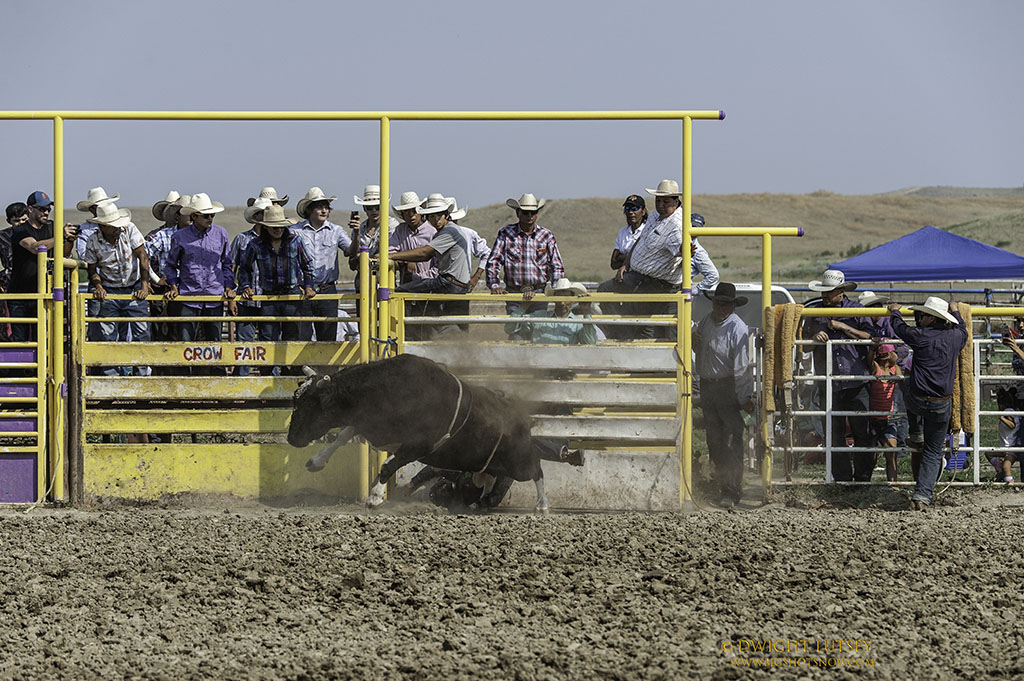
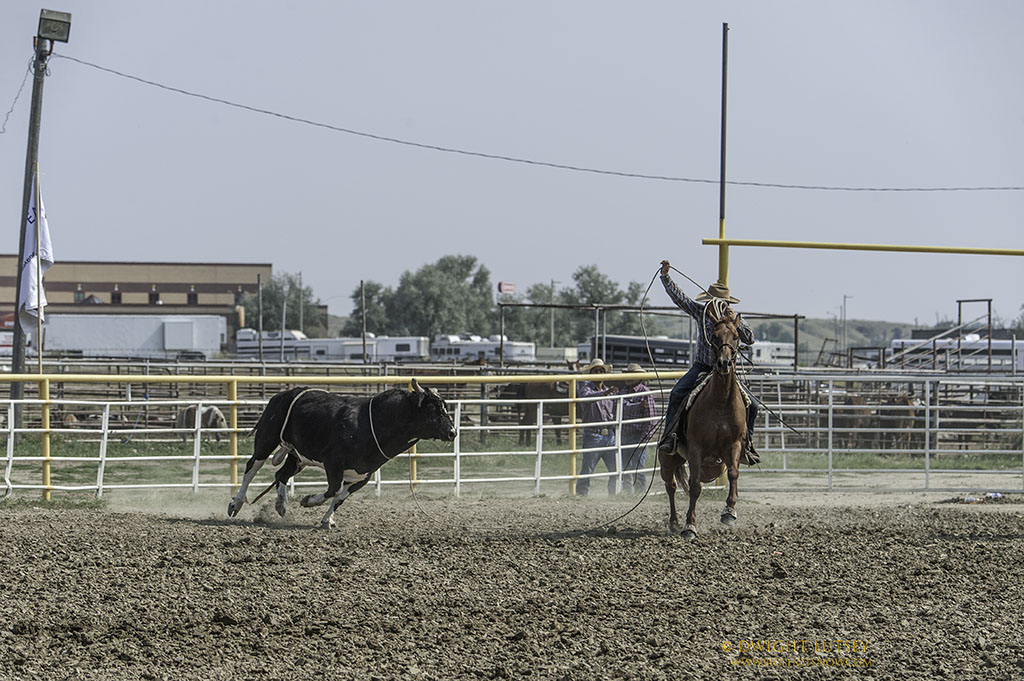
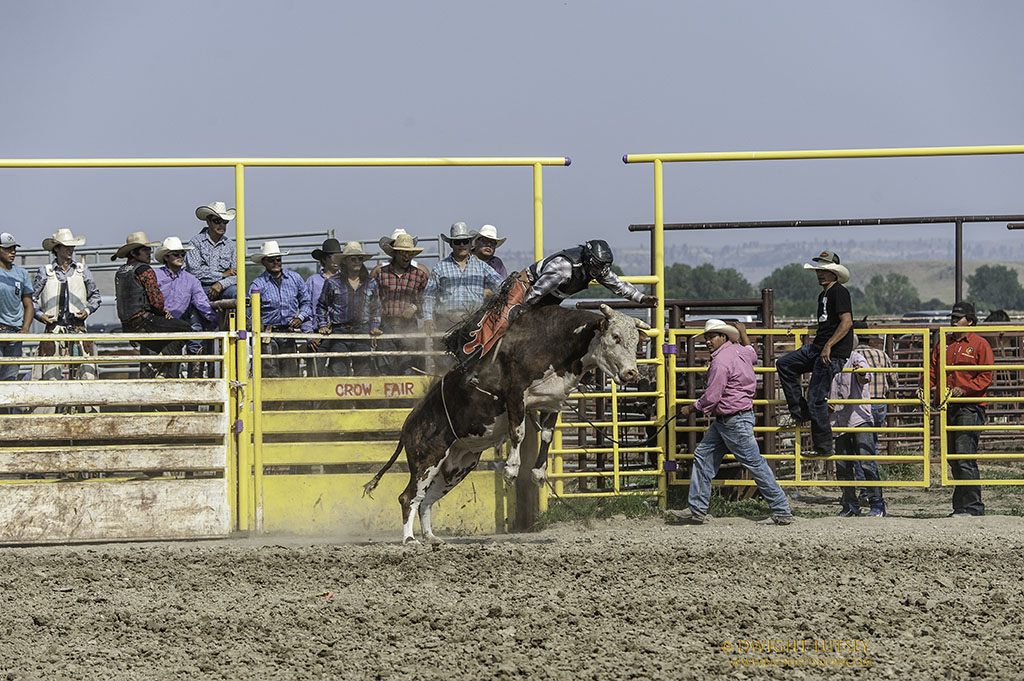
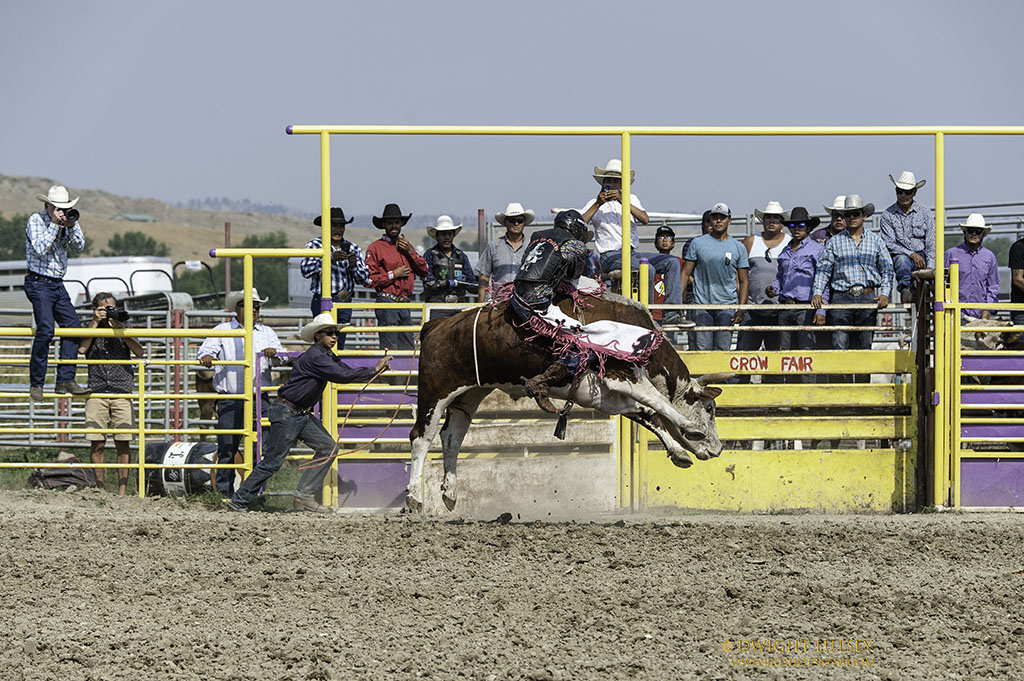
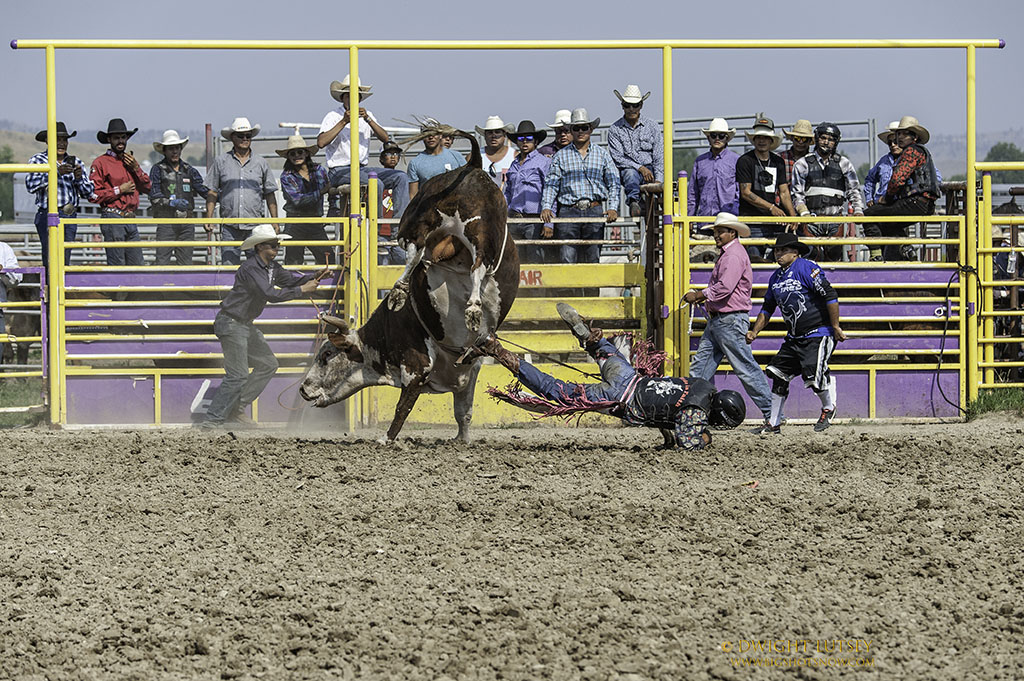
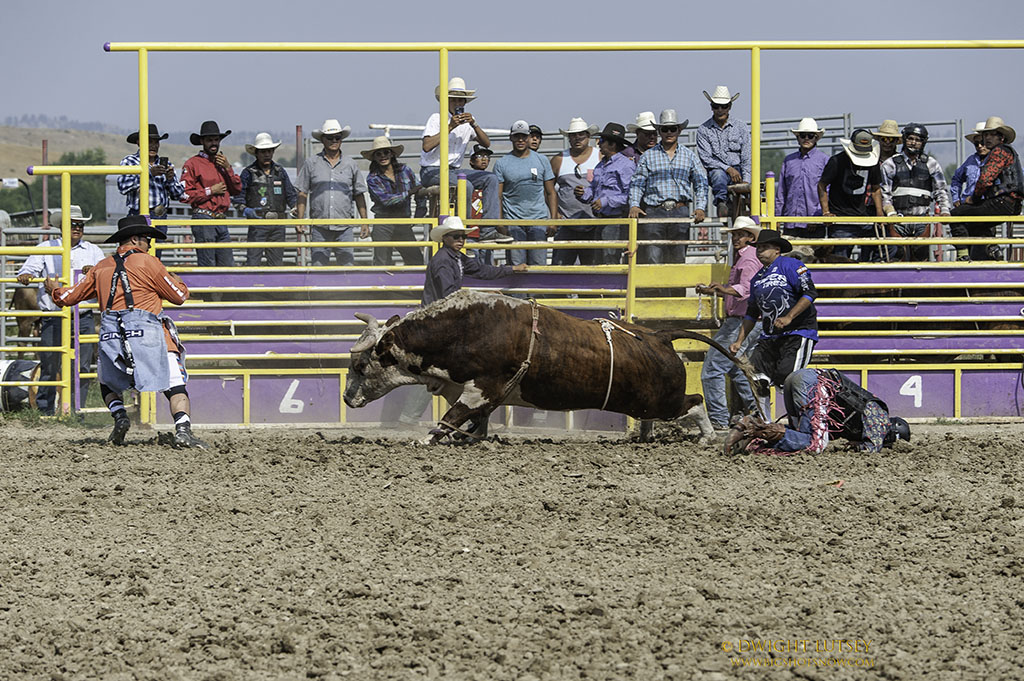
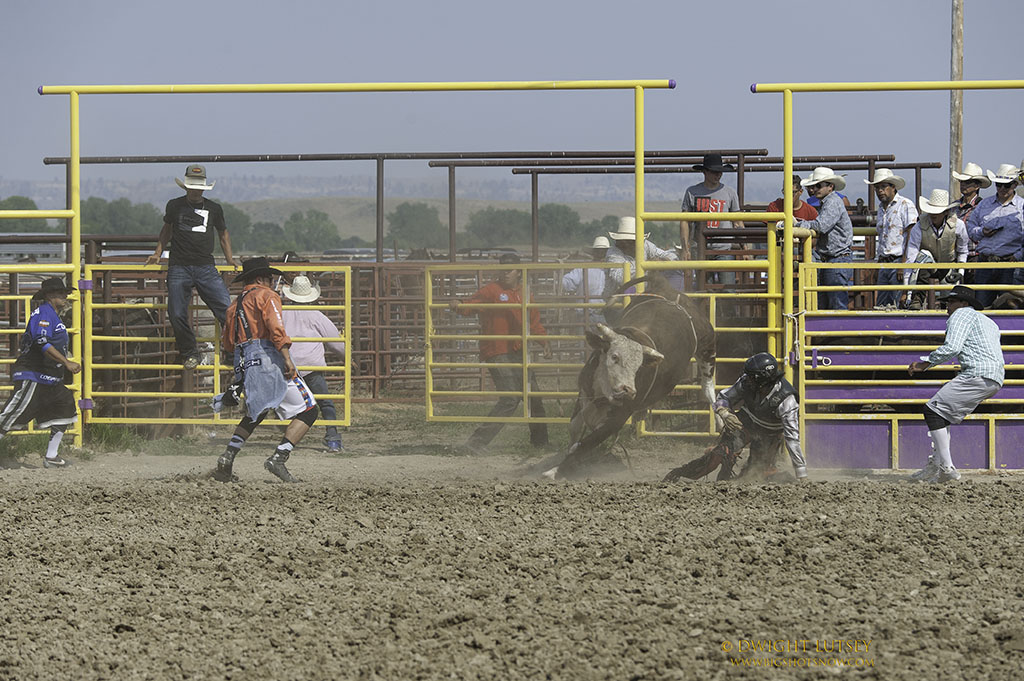
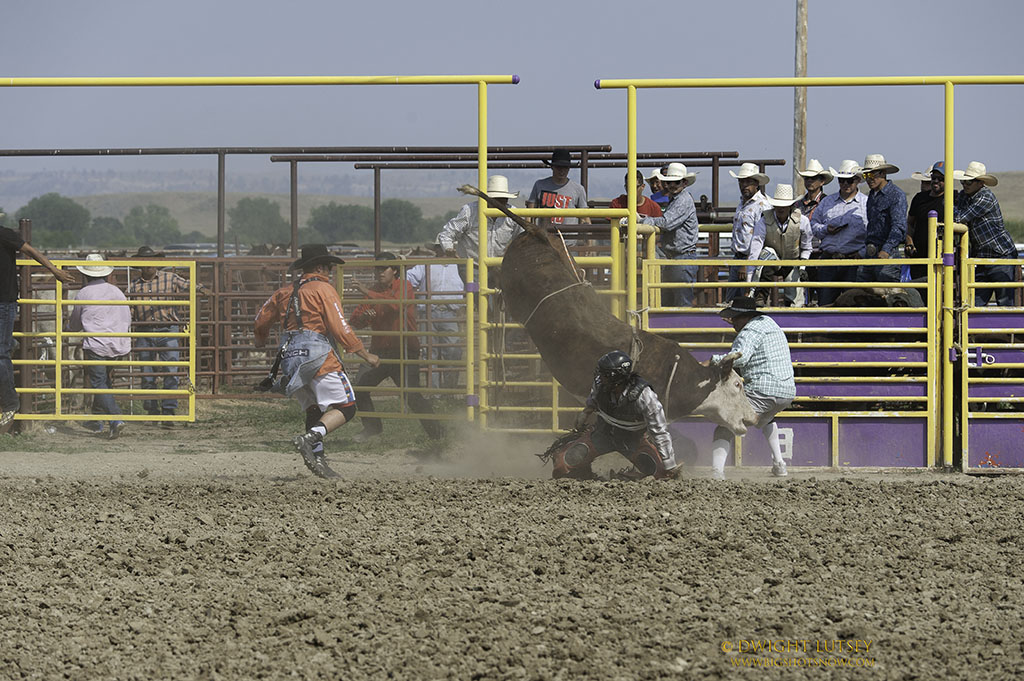
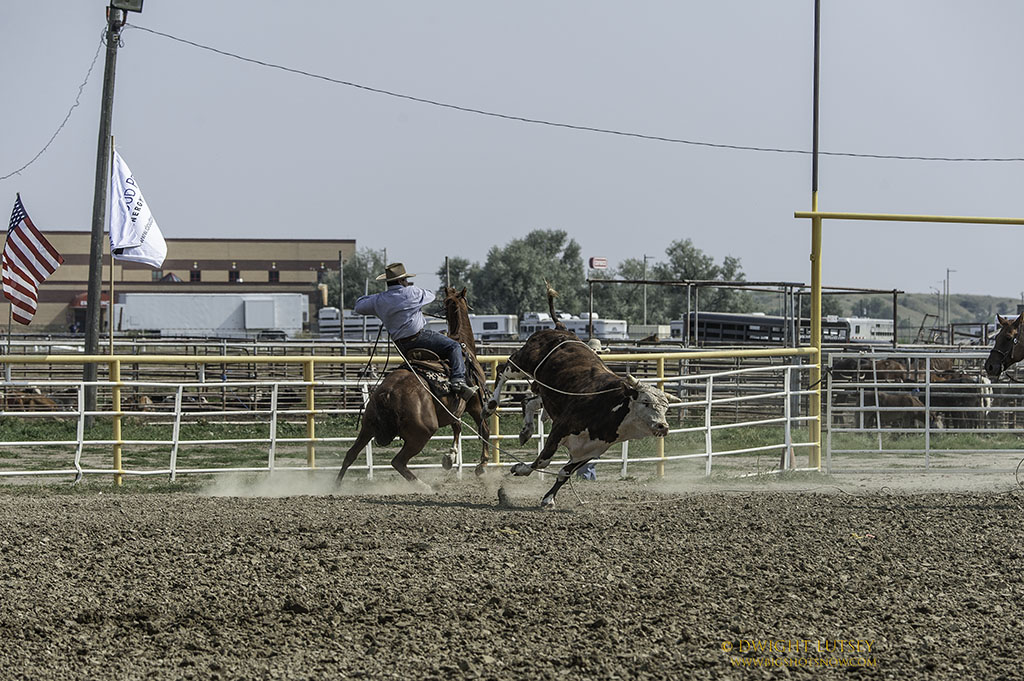
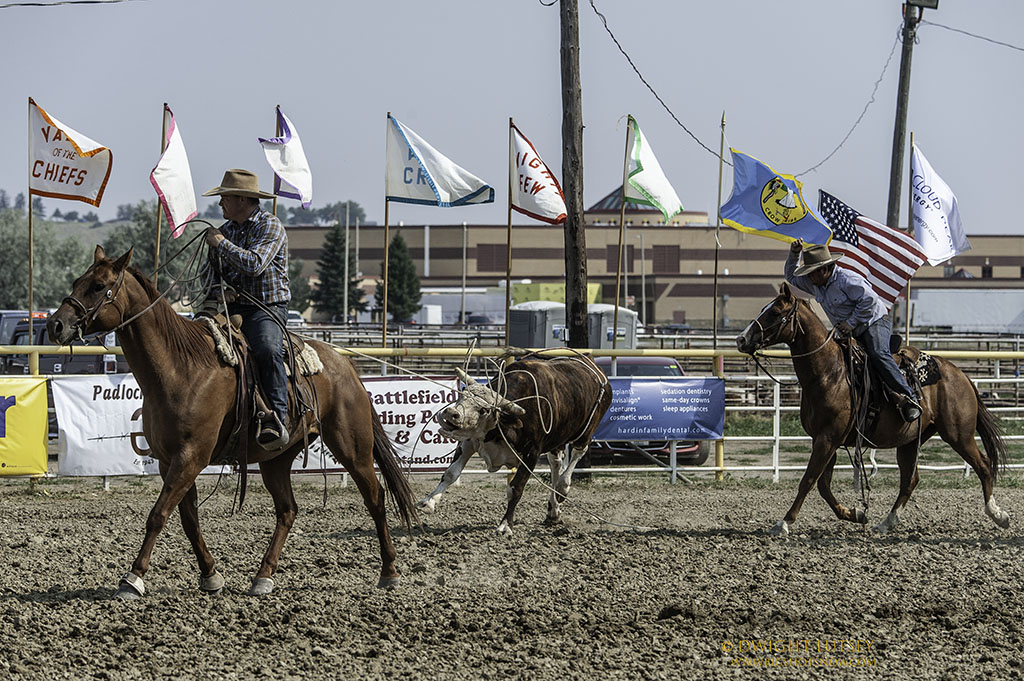
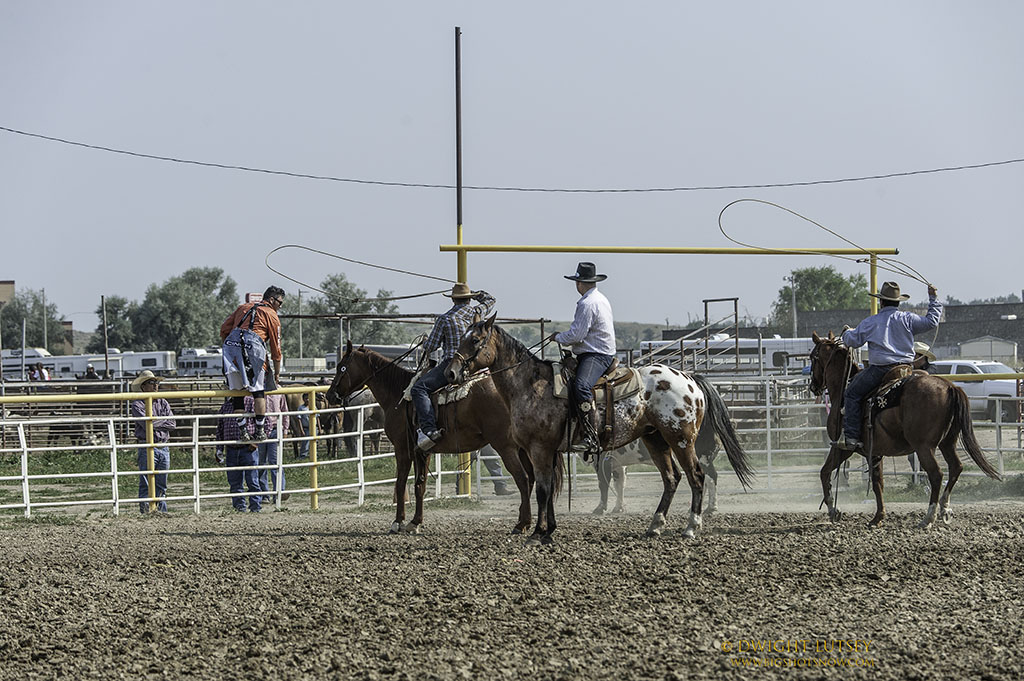
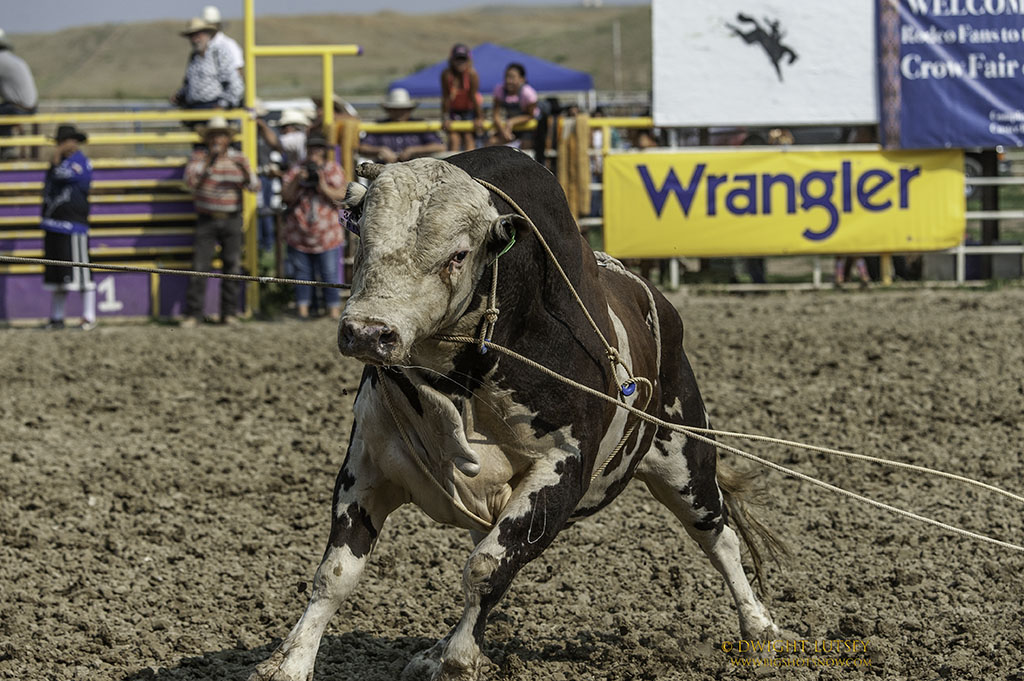
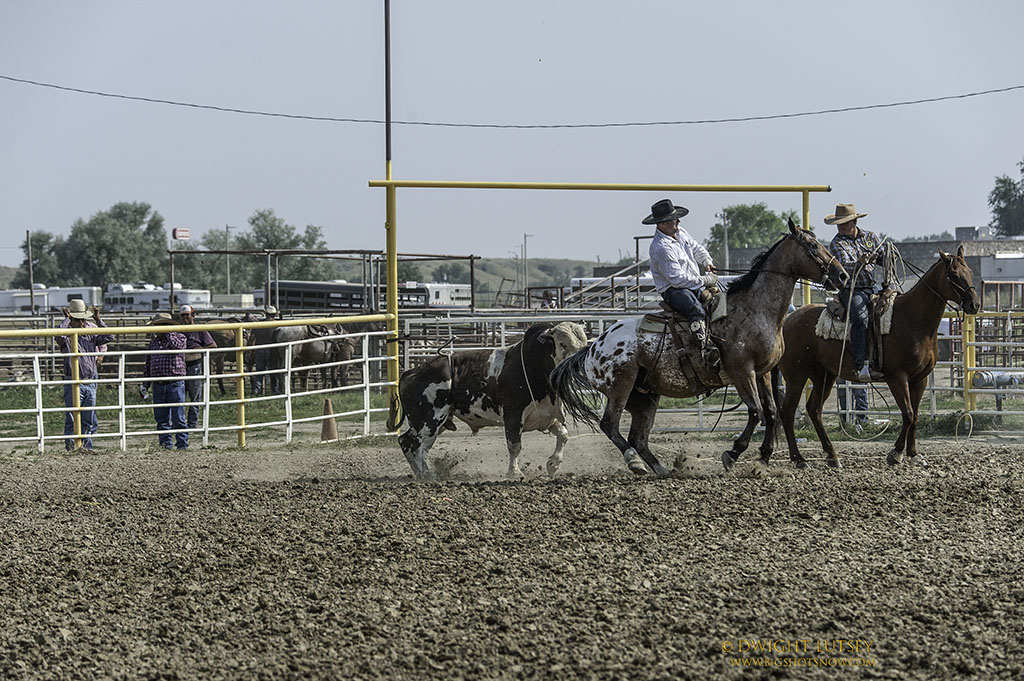
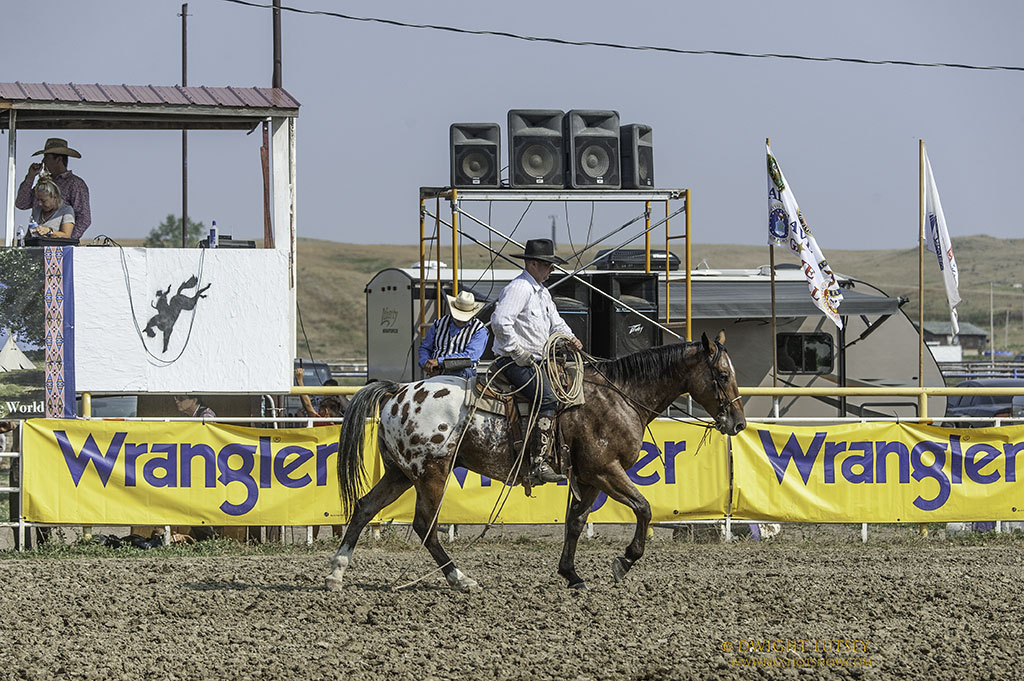
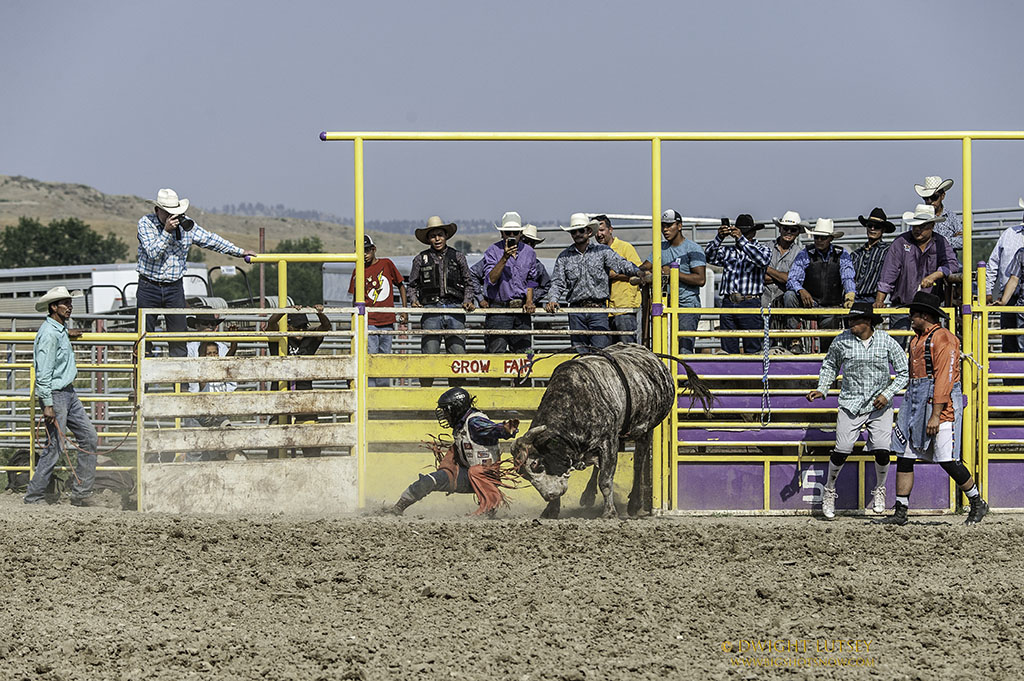
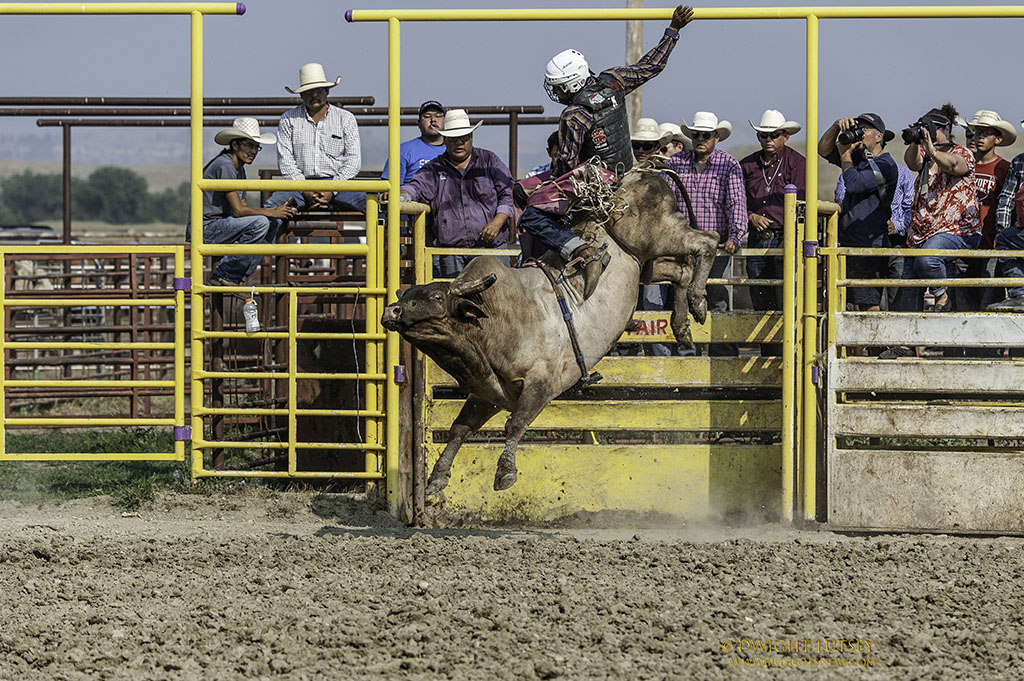
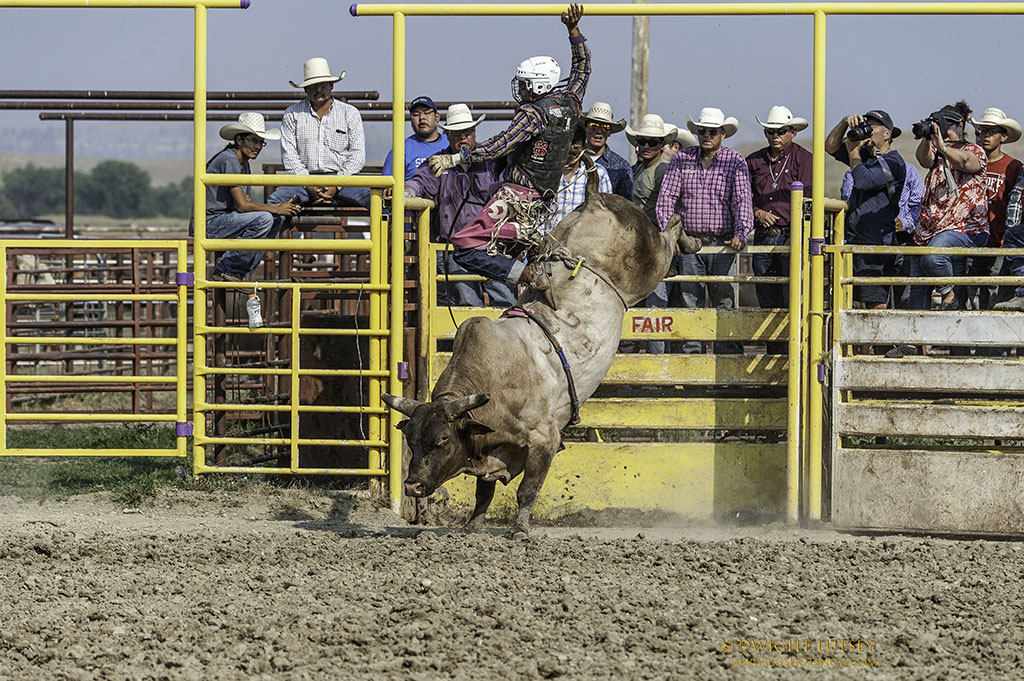
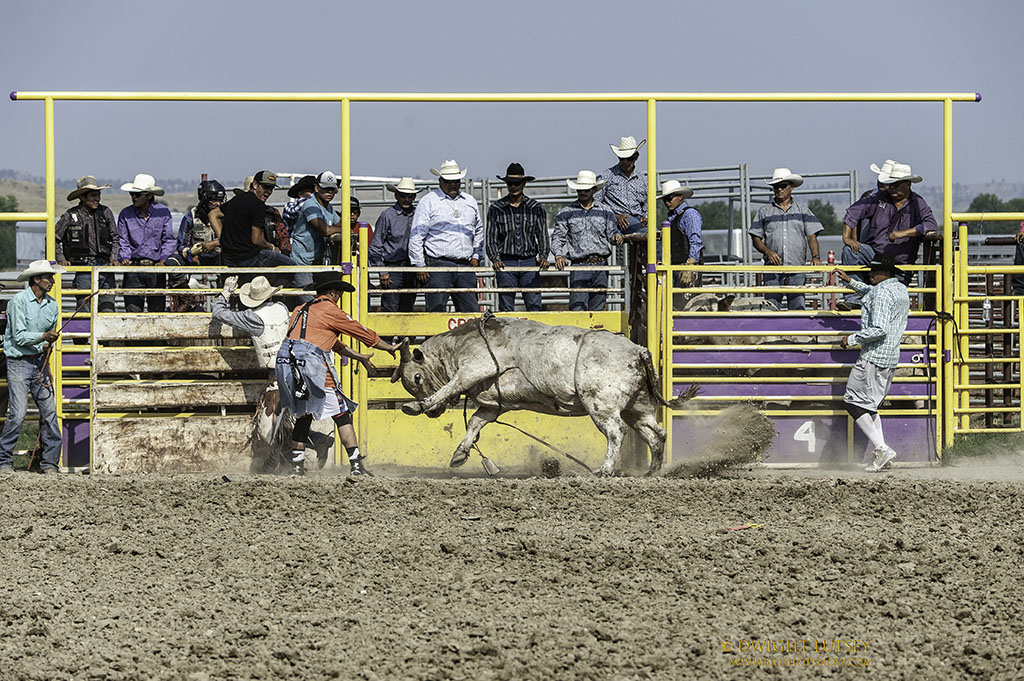
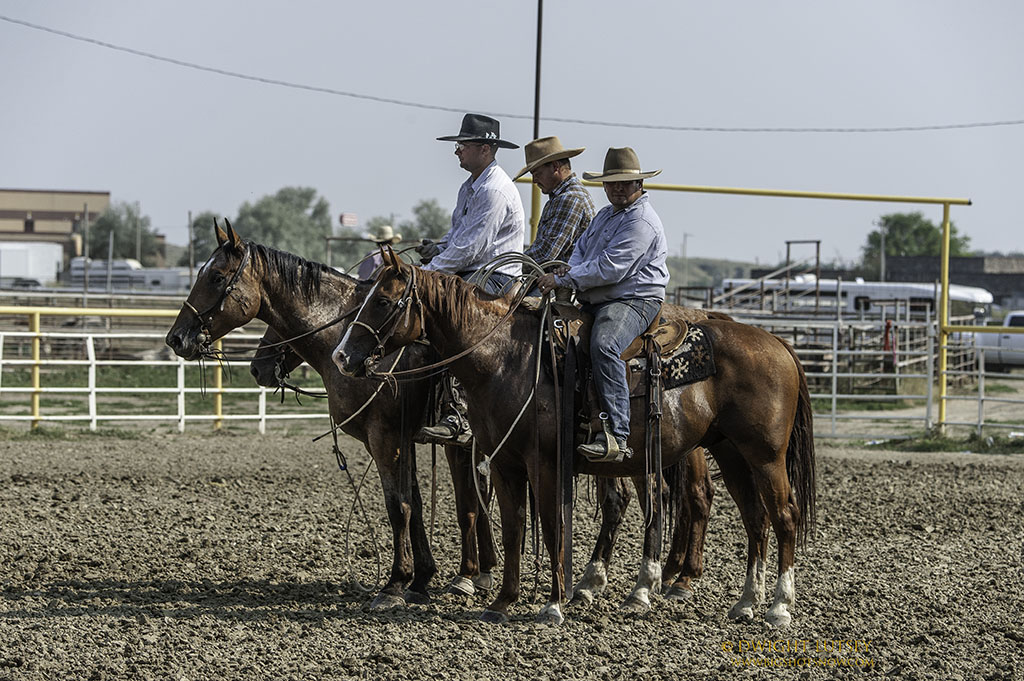
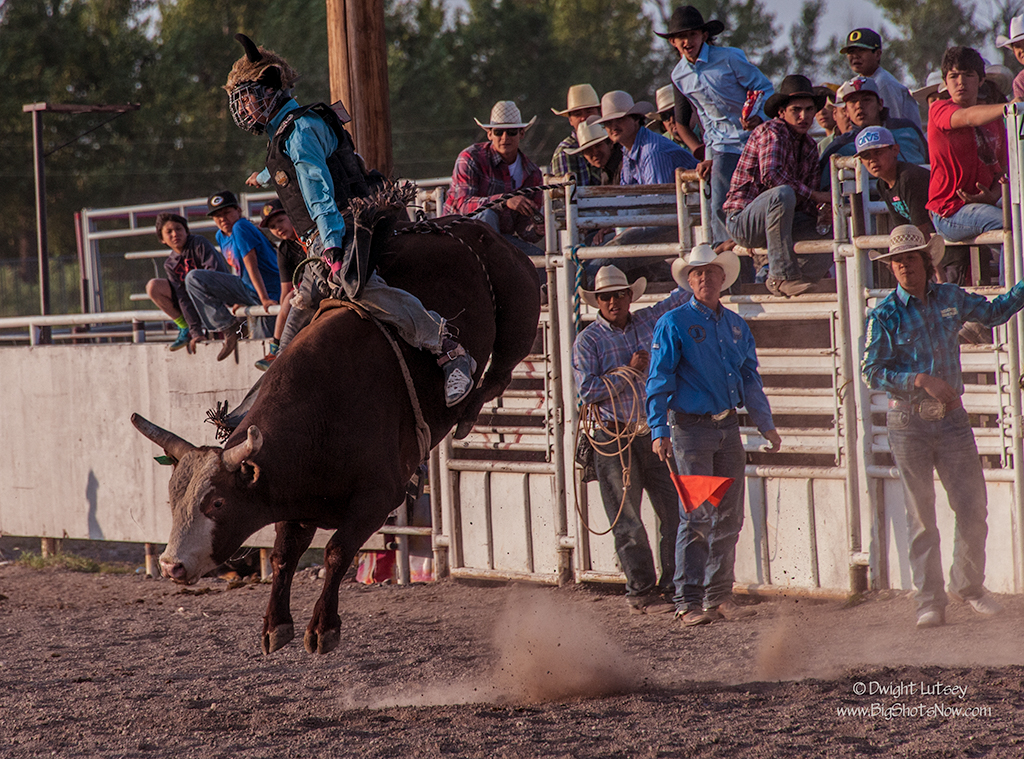
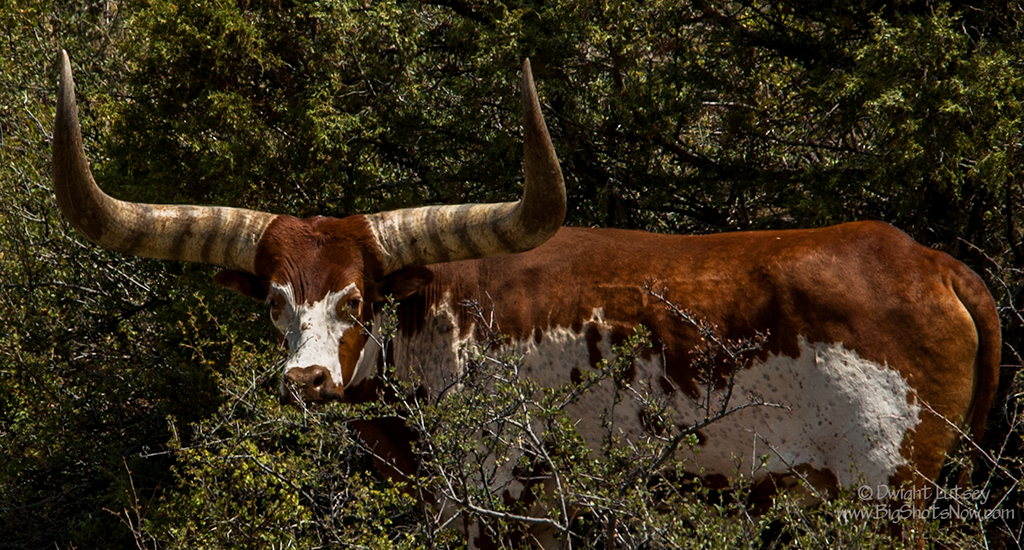
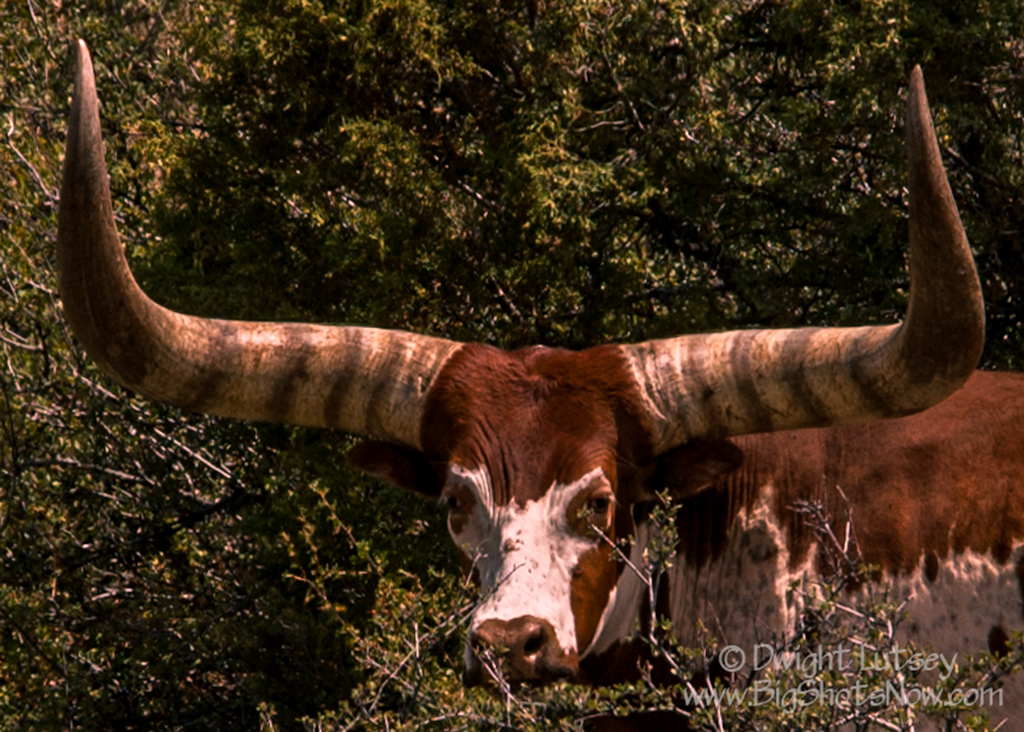

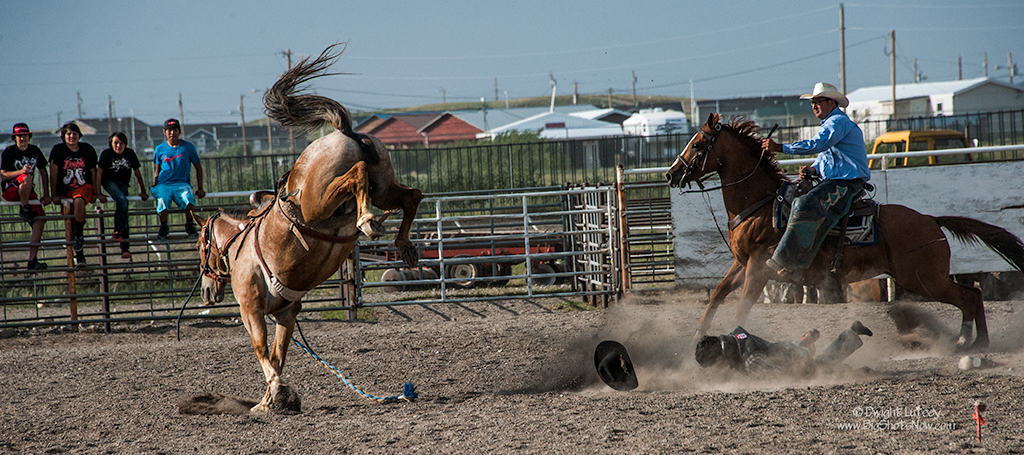
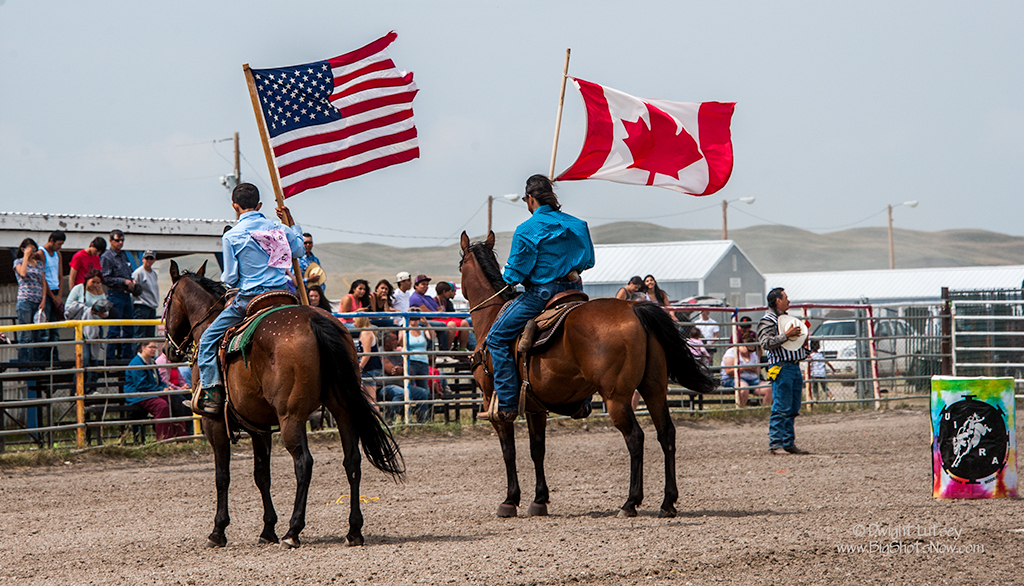

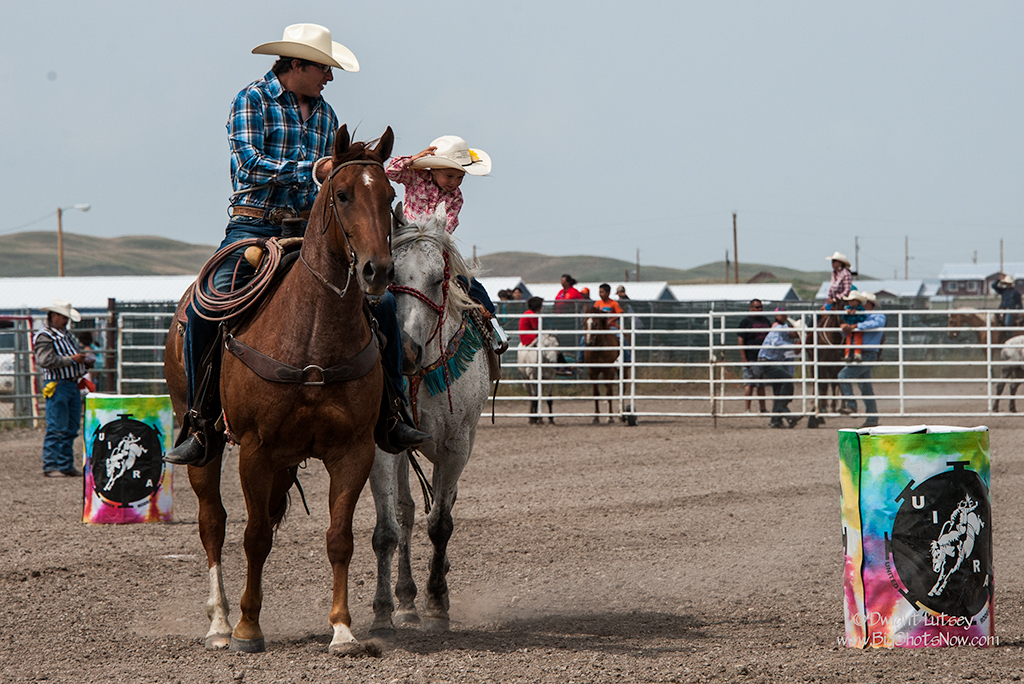
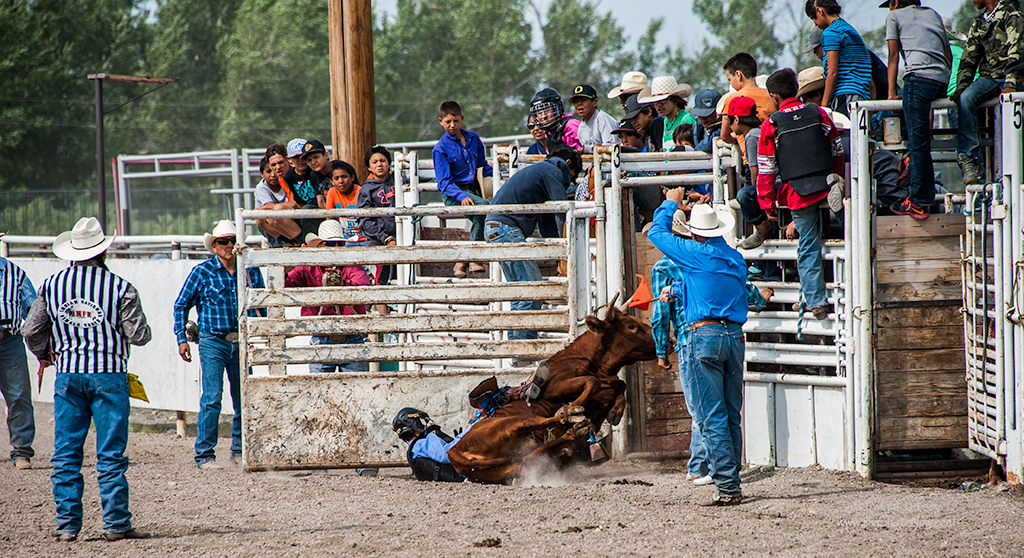
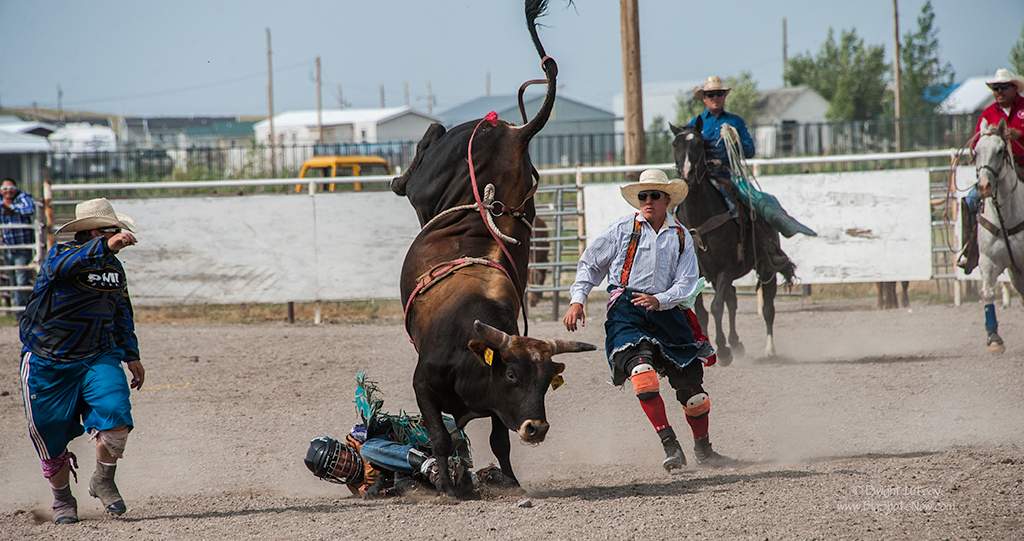

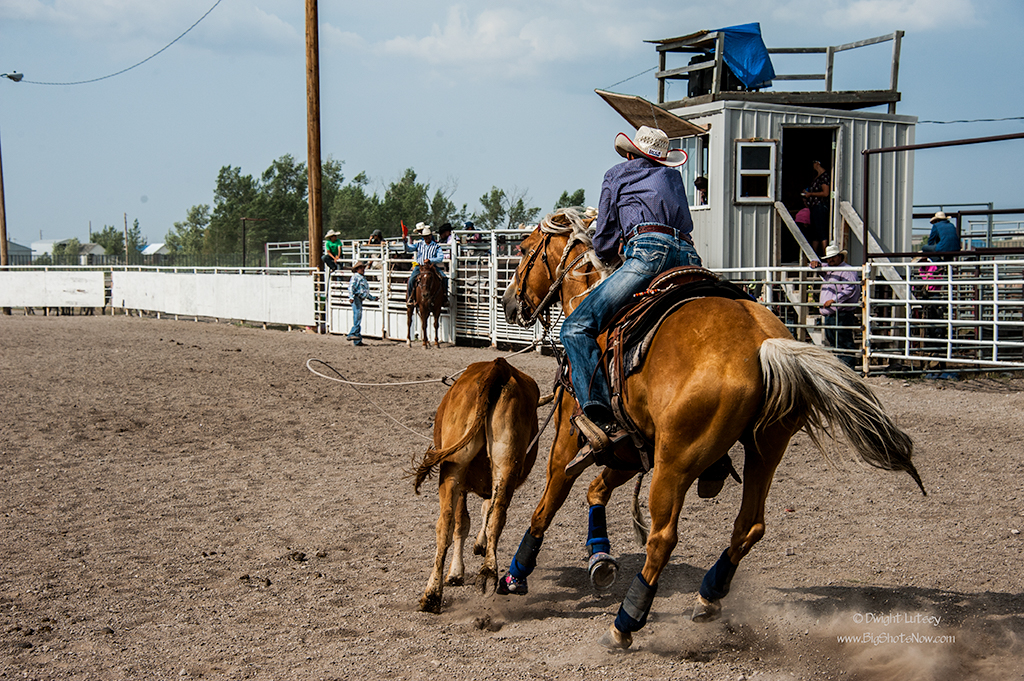



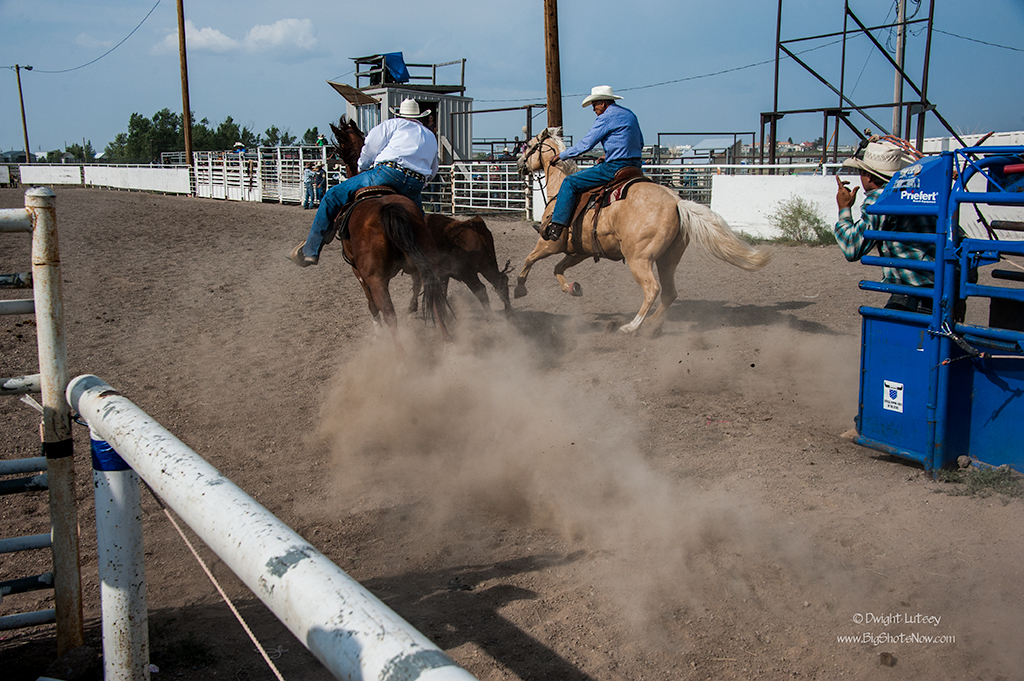
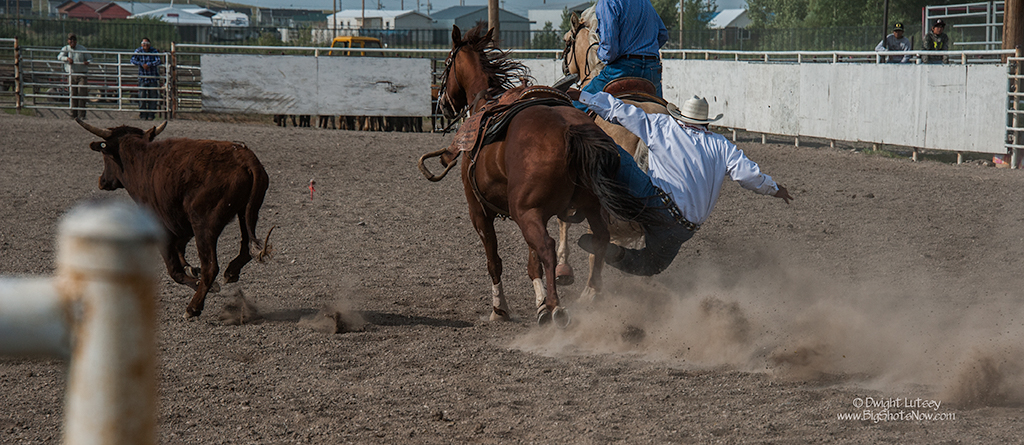

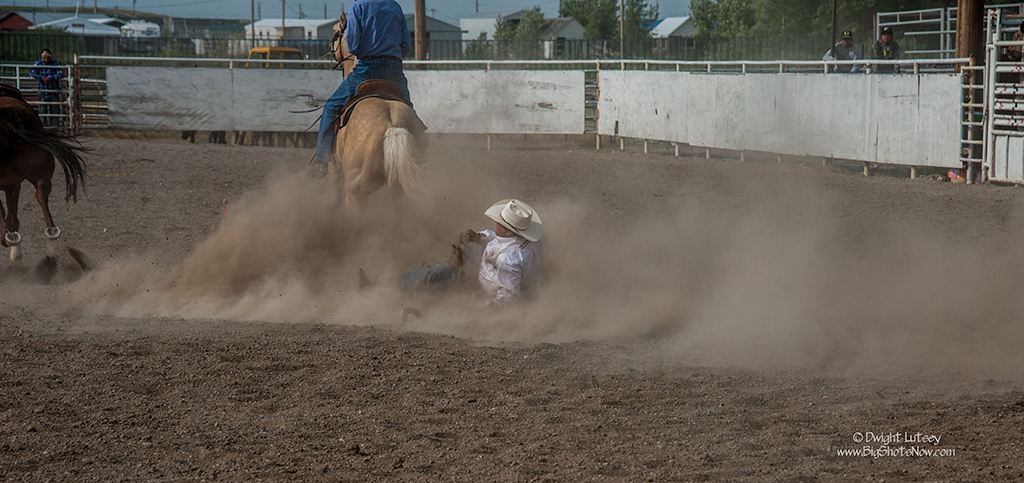

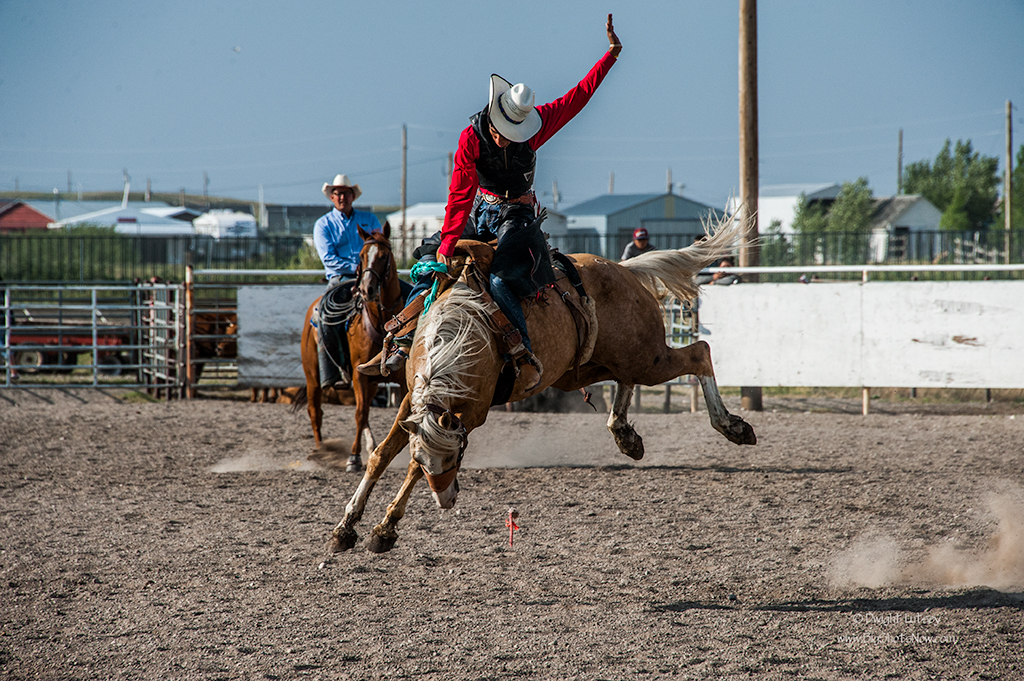
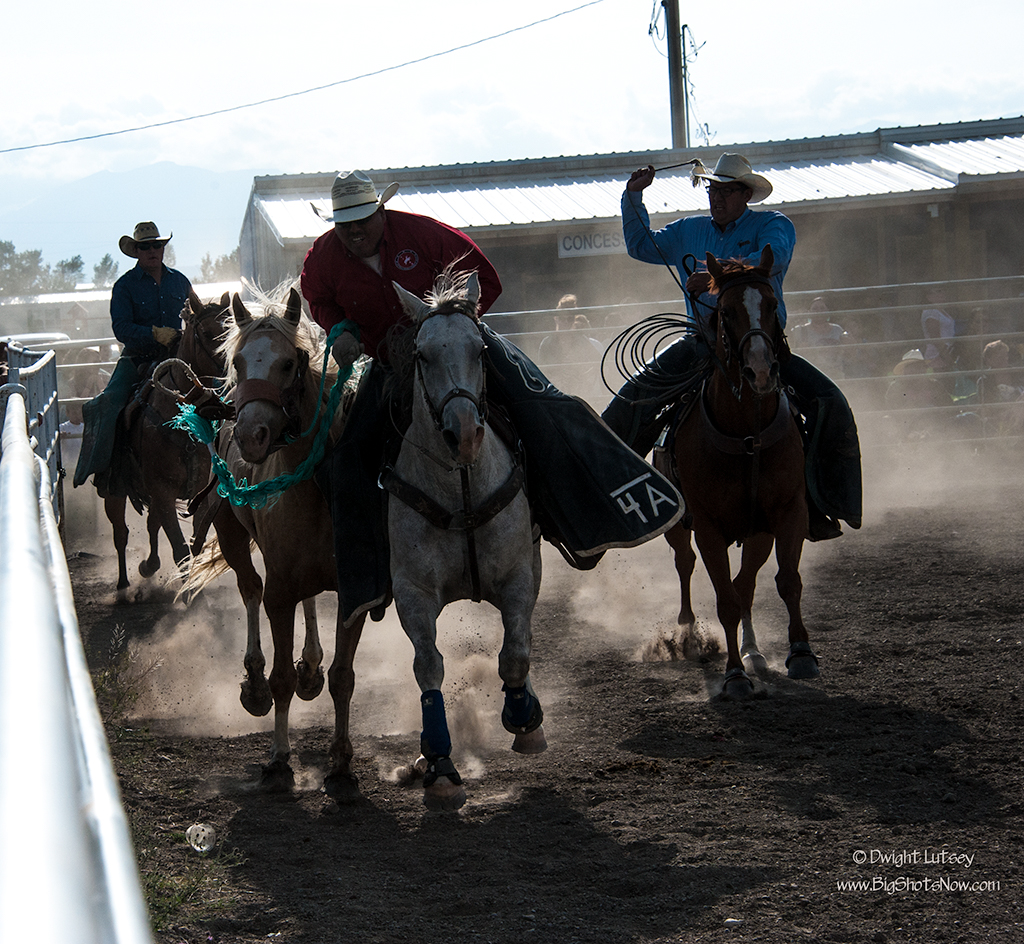
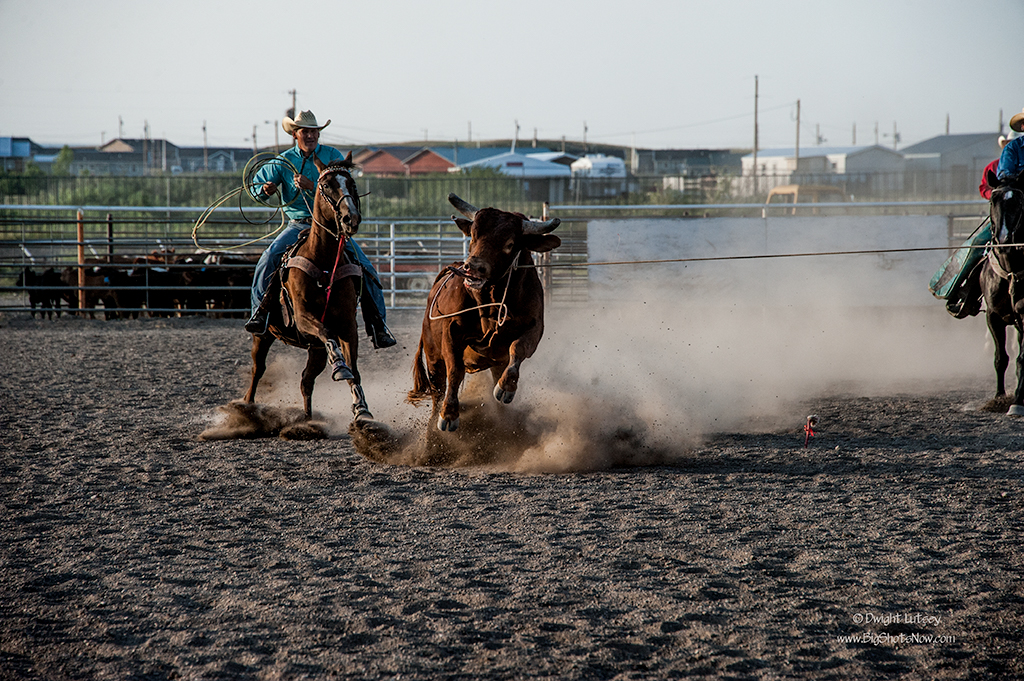
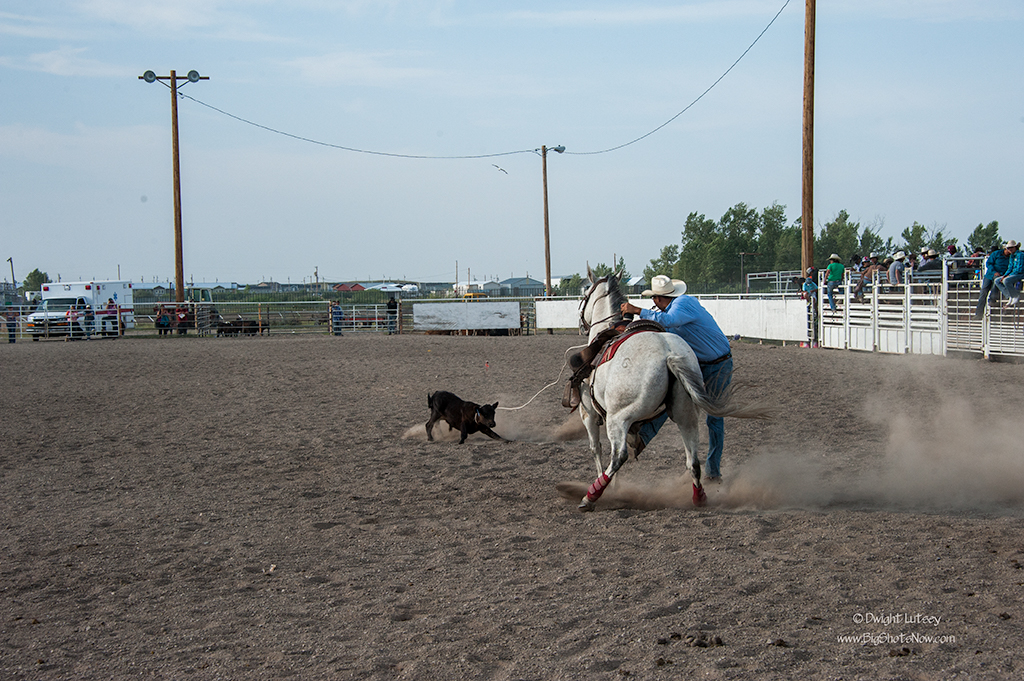

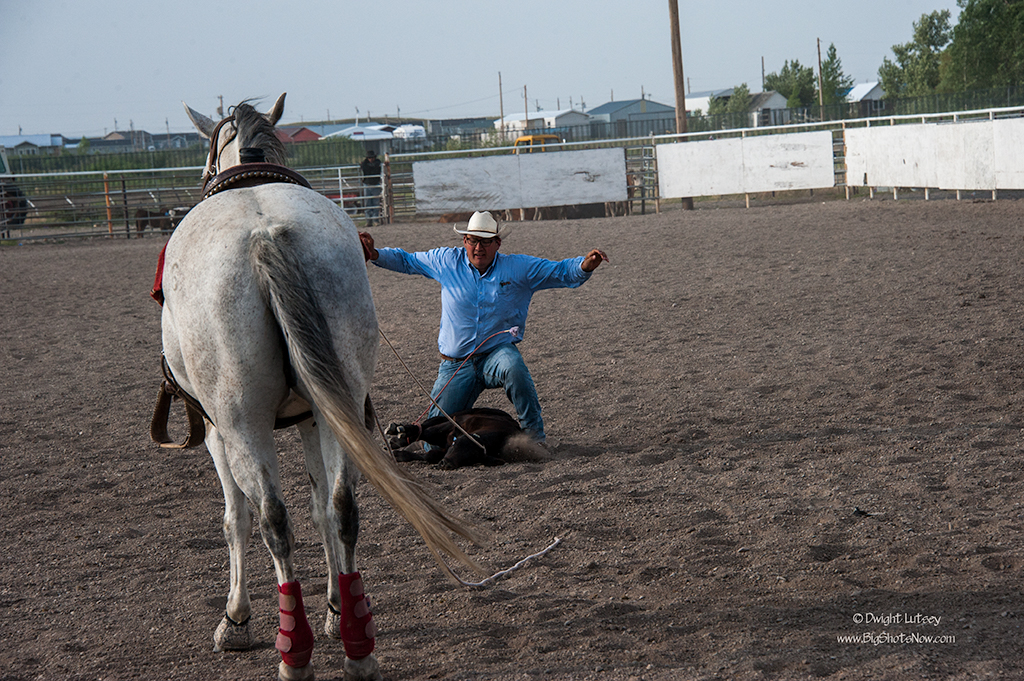

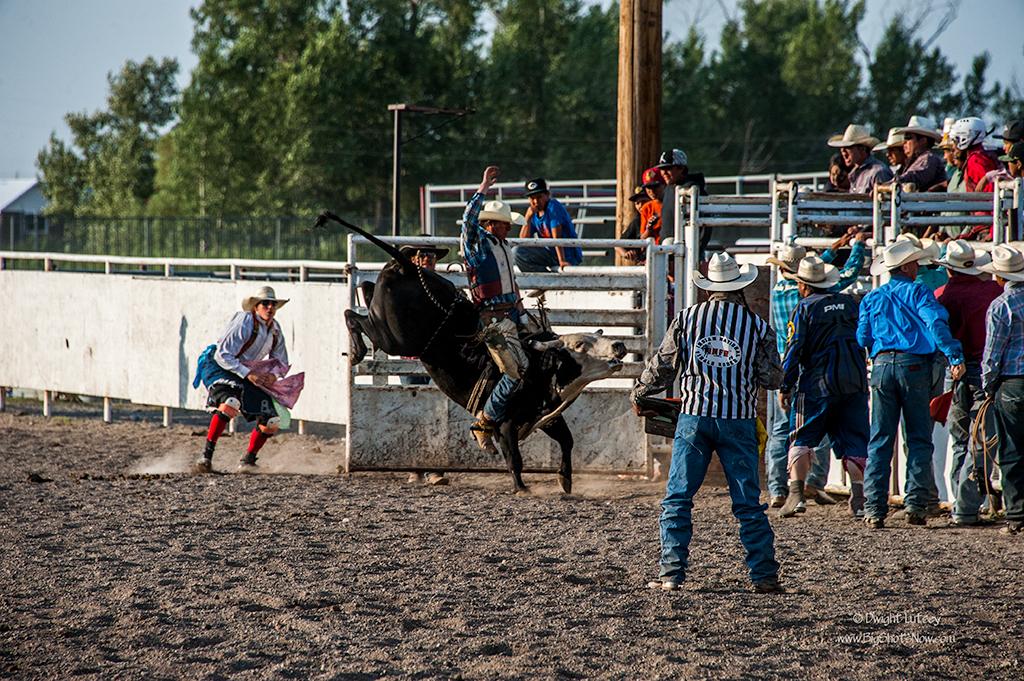
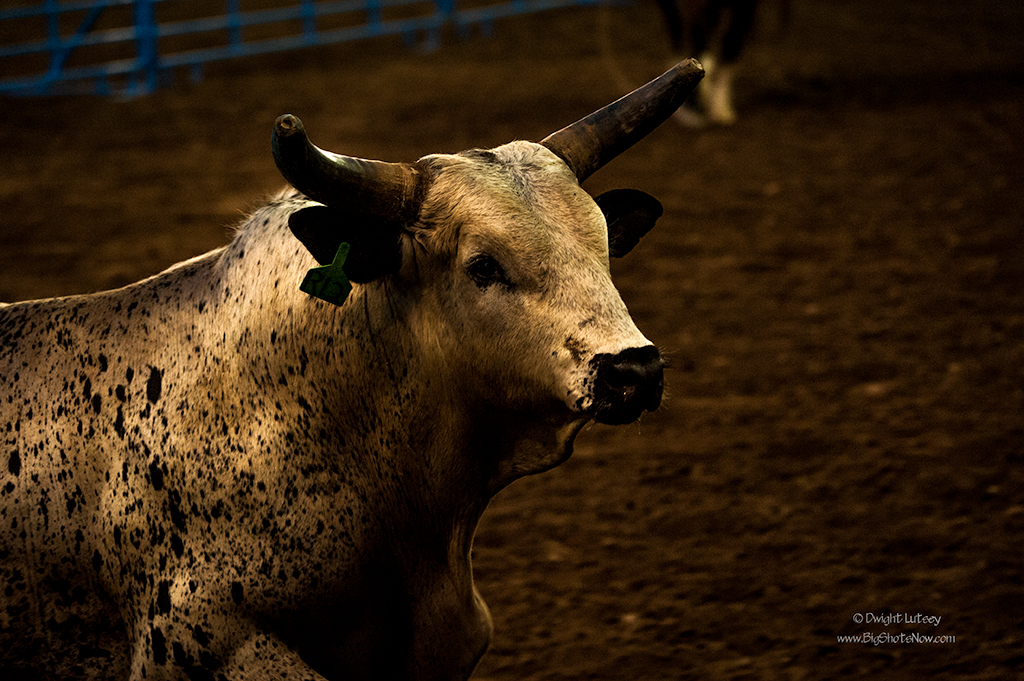
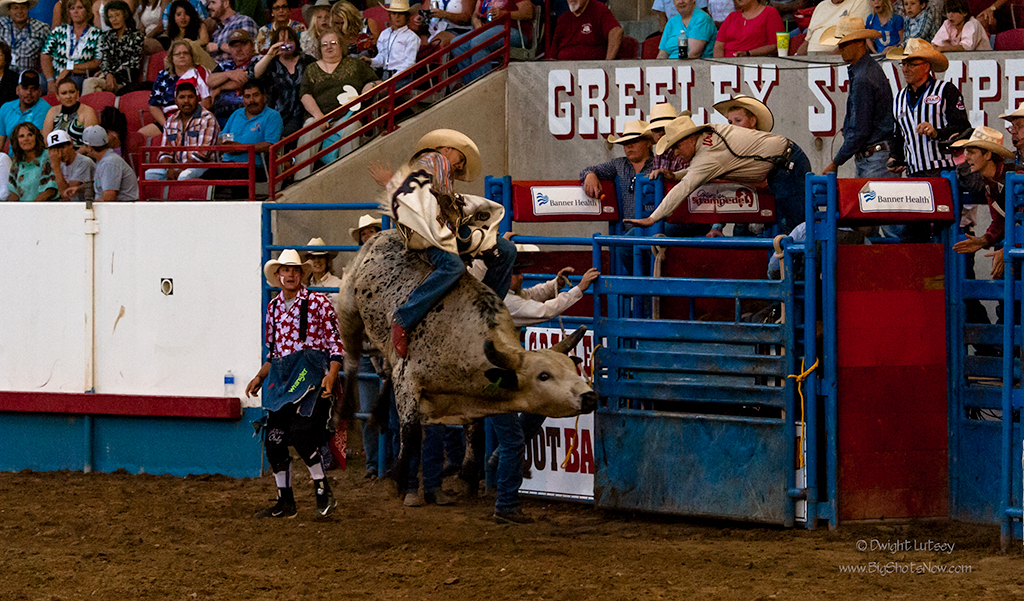
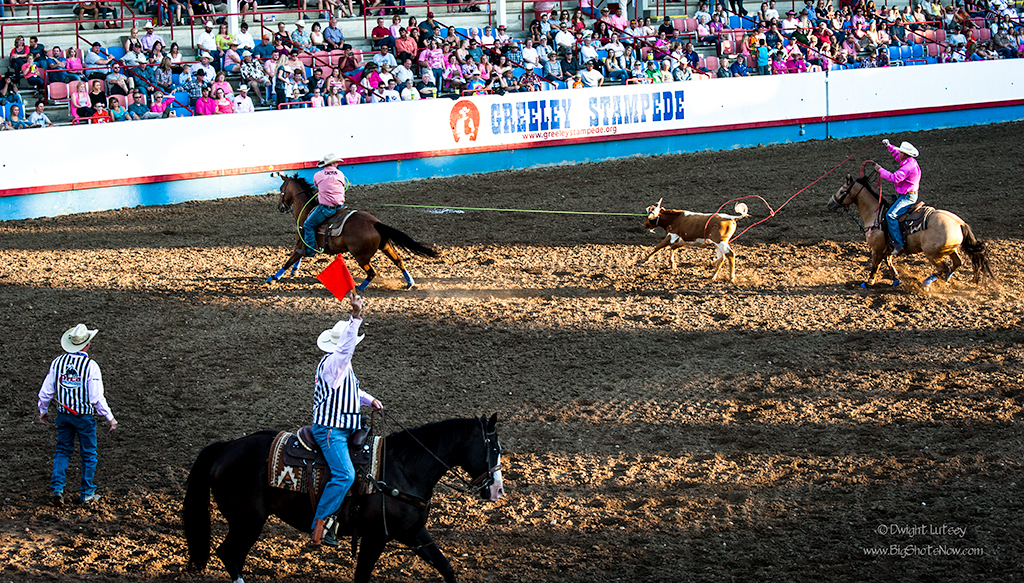
You must be logged in to post a comment.